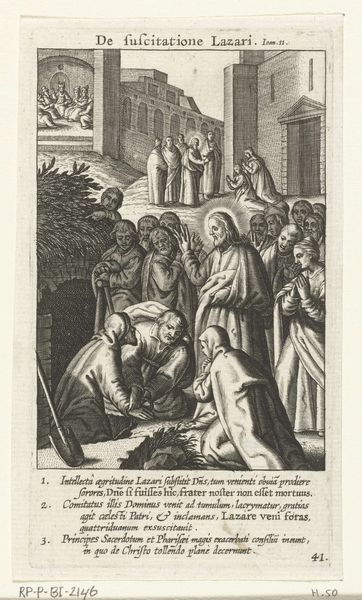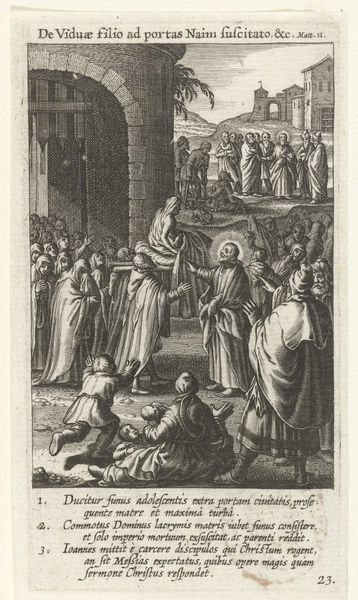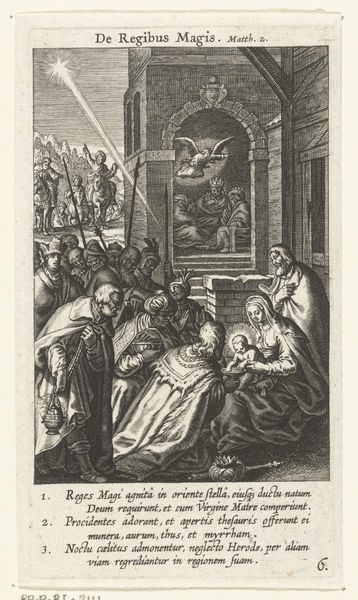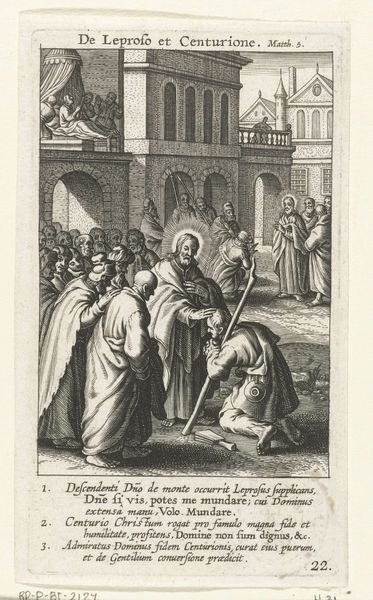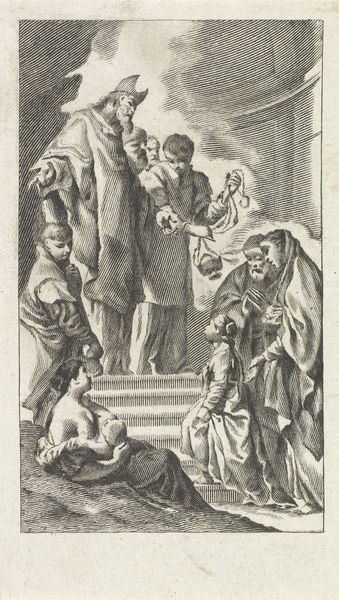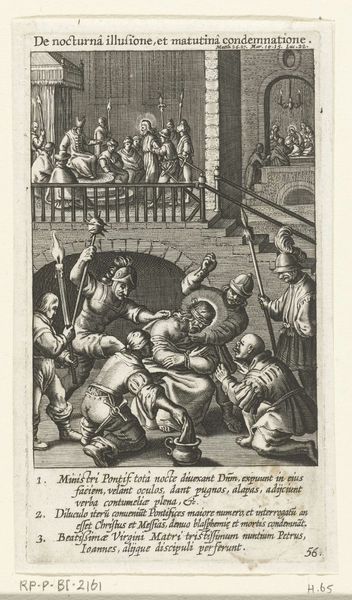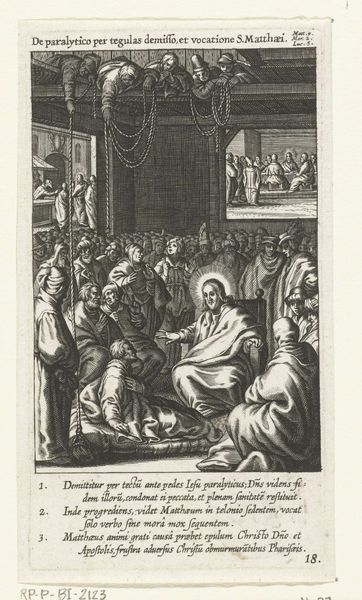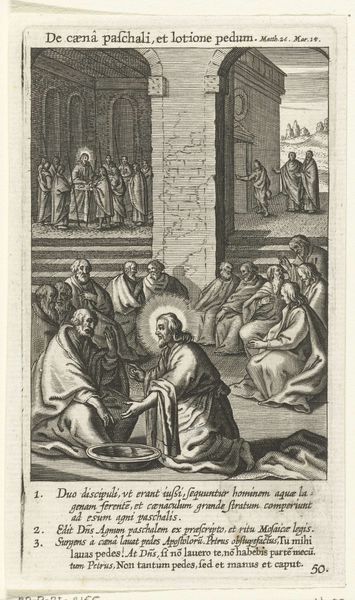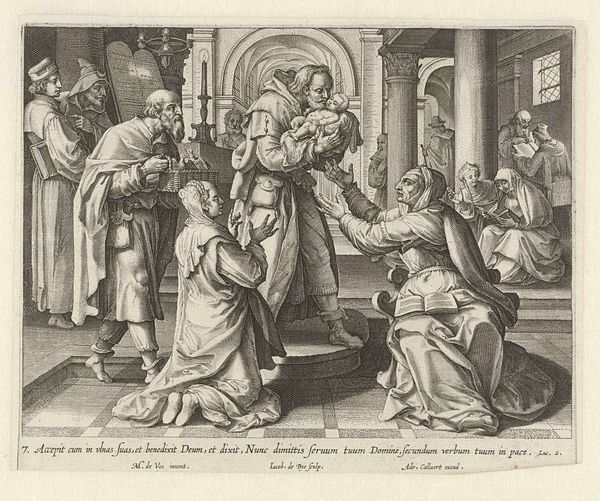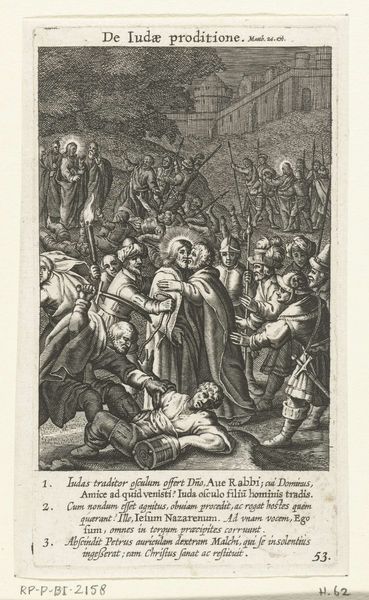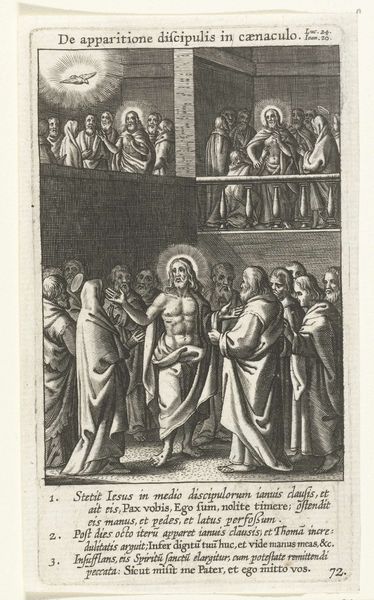
print, engraving
#
narrative-art
#
baroque
# print
#
old engraving style
#
figuration
#
history-painting
#
engraving
Dimensions: height 133 mm, width 75 mm
Copyright: Rijks Museum: Open Domain
Curator: Here we have "Christ and the Adulteress", an engraving attributed to Boëtius Adamsz. Bolswert, created sometime between 1590 and 1622. It's currently held in the Rijksmuseum collection. Editor: Whew, it's intense. That stark contrast, all those judgmental faces staring down... It's like walking into a really awkward family gathering. I immediately feel for the woman; there's such vulnerability there, but there’s something hopeful as well. Curator: Indeed. Bolswert was working within the Baroque style, which often emphasized dramatic compositions and emotional intensity. It depicts the biblical story from the Gospel of John, where Jesus is confronted with a woman accused of adultery. Editor: Right. I see the story unfold in the composition. The accusers seem poised, ready to condemn, while Jesus is almost hidden. There's a focus on the power dynamics, how one figure shines out of many. Is he really writing in the dirt? Curator: According to the narrative, yes, he is writing on the ground while challenging those without sin to cast the first stone. It's a pivotal moment highlighting the hypocrisy and legalism of the accusers versus Jesus’ message of grace and forgiveness. This scene was particularly resonant during the Counter-Reformation, prompting introspection and calls for ecclesiastical reforms of justice. Editor: So, it’s like this tiny, powerful gesture disrupts everything. It feels so intimate against that huge crowd of disapproval. It almost whispers, “Think for yourselves,” which still speaks powerfully across centuries. Curator: Absolutely, that disruption is central. Engravings like these circulated widely and allowed individuals to engage directly with biblical narratives, fostering debate on issues of justice and morality outside of official ecclesiastical channels. The act of printing here is really the democratizing force allowing such interpretations to spread far and wide. Editor: Thinking about the political weight behind religious depictions gives it another layer of gravity. Thanks to its design and skillful reproduction, this engraving isn't just an image. I imagine it sparking challenging, possibly dangerous conversations back then. Curator: Precisely. So, with Bolswert's image, the fusion of storytelling and historical reflection underscores how artwork may shape public sentiment. Editor: Definitely, now I won’t simply see it as some pretty relic but rather as the carrier of ideas. It really makes the whole experience that much more alive, and meaningful.
Comments
No comments
Be the first to comment and join the conversation on the ultimate creative platform.
